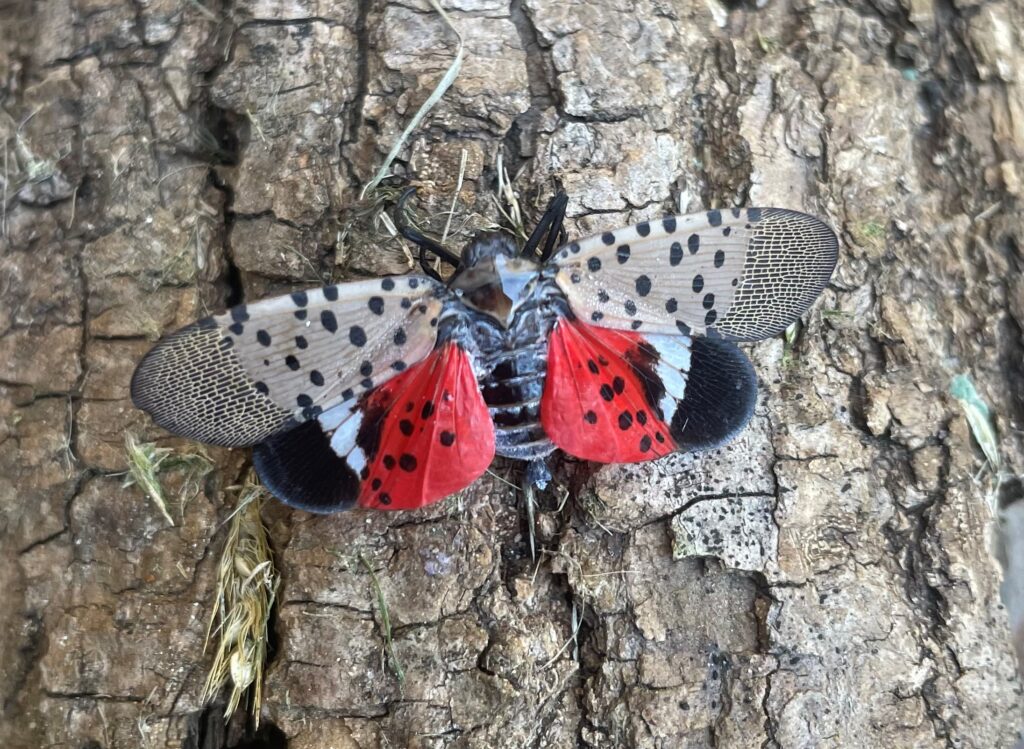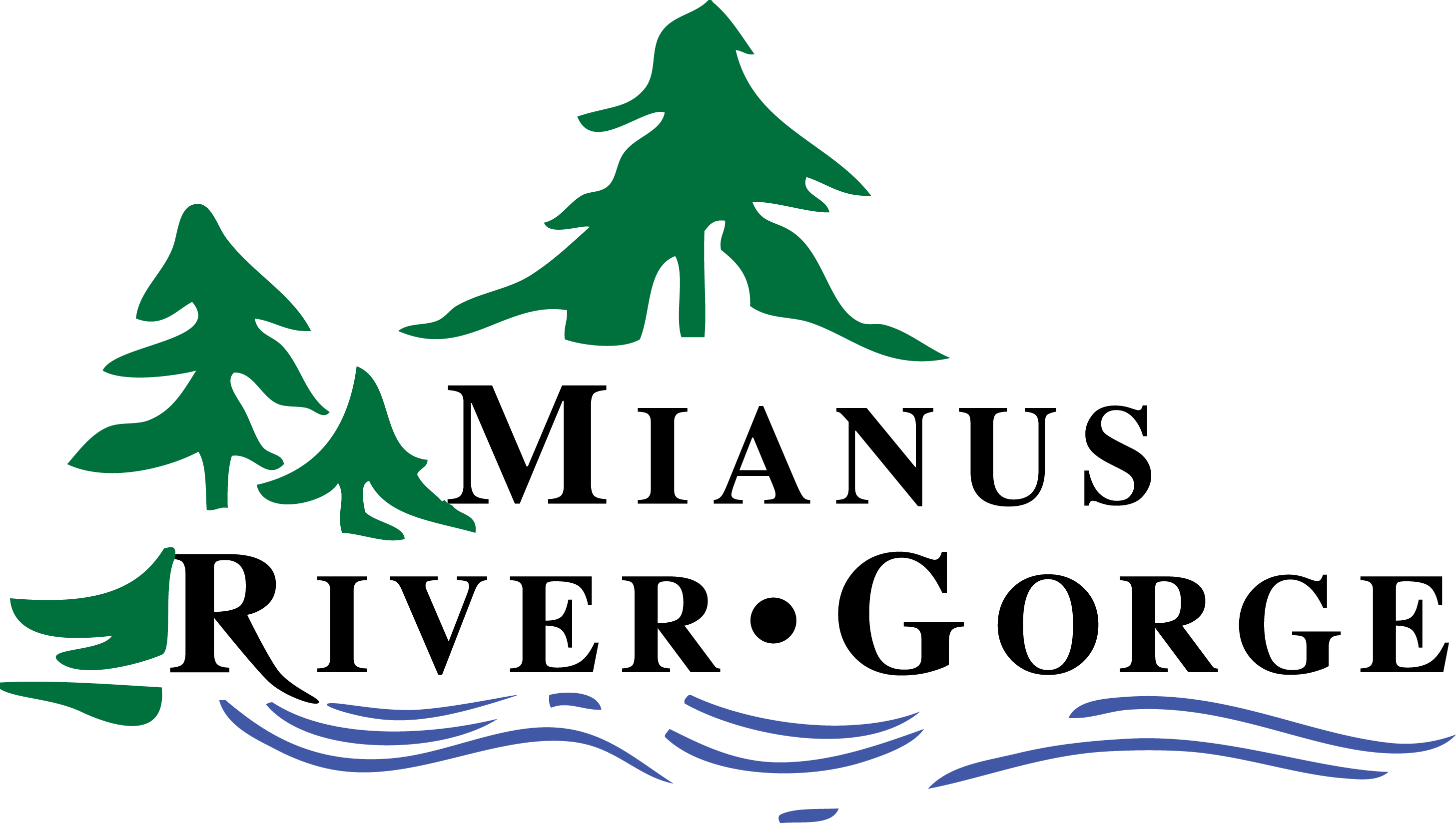The spotted lanternfly is an invasive insect that has recently made its way to the Mianus River Gorge. Native to China, the spotted lanternfly was first discovered in the US in 2014, but was not detected at the Gorge until 2022. The spotted lanternfly has now been seen in at least 14 states, primarily in the northeast.

Spotted lanternflies hatch in the late spring/early summer. During their early developmental stages, the spotted lanternfly nymphs are only about ¼” long and are black with white spots. By July, these nymphs turn red and black with white spots as they enter their final developmental stage.
The nymphs soon develop into adults (pictured above), which can be found from July through December. By September, the adults start to lay egg masses on hard surfaces, including trees, stones, vehicles, and more. The adults die off in December, and the cycle starts again in May when the eggs hatch.
Often found on their preferred host tree, another problematic invasive species called tree-of-heaven, these insects feed on sap from over 70 different species, including many economically important plants such as grapevines, maple trees, apple trees, and more. Excessive feeding by the spotted lanternfly can cause significant stress to the plants, ultimately ending in death. As it feeds, the spotted lanternfly excretes a sticky, sugary substance called honeydew, which attracts bees, wasps, and other insects. Spotted lanternflies are part of a group of insects called planthoppers. Adults can fly short distances between trees, but they tend to spread through hitchhiking and through egg masses accidentally transported on vehicles, firewood, outdoor furniture, etc. Please be sure to check your vehicle when leaving any area with spotted lanternfly infestations for possible hitchhikers, and be especially vigilant when transporting any objects that could contain egg masses.
